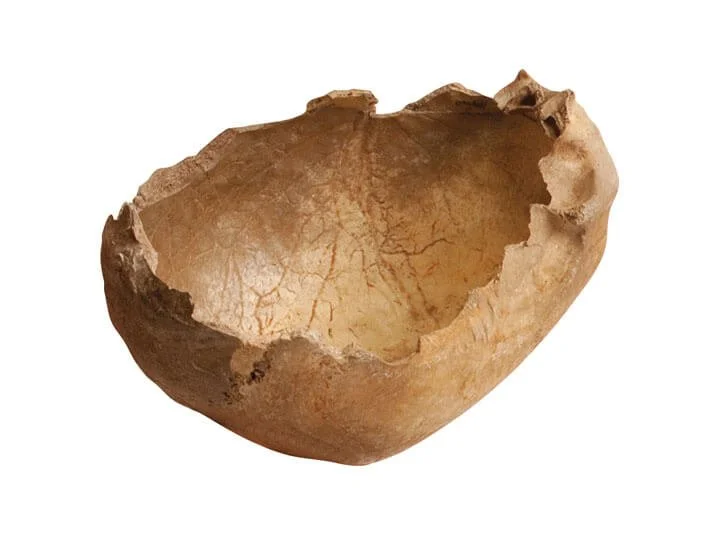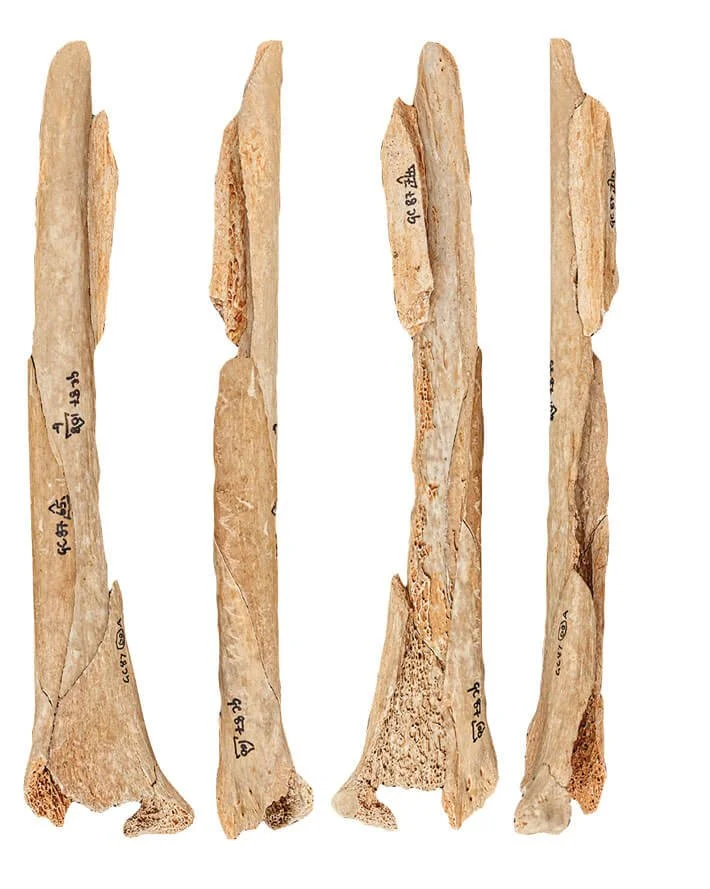In the dimly lit recesses of Europe's Ice Age, a mysterious and chilling practice emerges from the shadows of prehistory: ritual cannibalism. A recent study sheds light on this macabre aspect of our ancestors' culture, revealing intriguing insights into their beliefs and customs.
Between 23,500 and 13,500 years ago, during the Magdalenian period, hunter-gatherer societies thrived across the continent. These ancient Europeans left behind a rich tapestry of artifacts, including awe-inspiring cave paintings, intricate bone tools, and enigmatic figurines crafted from mammoth ivory. Yet, amidst these tangible remnants of their existence, there lies evidence of a practice that defies modern sensibilities: the consumption of human flesh as part of ritualistic ceremonies.
Dr. Silvia Bello, a paleoanthropologist at London's Natural History Museum, embarked on a groundbreaking investigation within the confines of Gough's Cave in England. What she unearthed within its cavernous depths challenged conventional understandings of ancient burial rites. Among the scattered remains of the Magdalenian people, Bello discovered human skulls meticulously fashioned into vessels, skeletal fragments bearing marks of butchery, and bone engravings adorned with intricate patterns. These findings painted a vivid picture of a society engaging in what appeared to be ritual cannibalism.
However, the significance of these grisly discoveries extended beyond the confines of a single cave. Dr. Bello and her colleague, archaeogeneticist William Marsh, delved deeper into the archaeological record, scrutinizing human remains from 59 Magdalenian sites across Europe. Their meticulous analysis revealed a startling pattern: instances of cannibalism outnumbered those of conventional burial practices. Moreover, genetic analysis provided further clues, indicating that individuals partaking in cannibalistic rituals shared distinct ancestry, setting them apart from contemporaries who opted for traditional interment.
(Courtesy Rosalind Wallduck)
Butchered radius
The implications of these findings are profound, challenging preconceived notions of ancient societies and their funerary customs. Far from mere acts of desperation in times of scarcity, the ritualistic consumption of human flesh among the Magdalenians suggests a complex interplay of cultural, spiritual, and social factors. As Dr. Bello aptly notes, these individuals were not driven solely by hunger but rather by a profound reverence for the deceased, expressed through transformative acts of consumption.
Yet, the enigma of Ice Age cannibalism persists, beckoning further exploration into the depths of our ancestral past. What beliefs and rituals motivated these ancient peoples to engage in such practices? How did notions of identity, community, and the afterlife shape their understanding of death? These questions linger, inviting scholars and enthusiasts alike to unravel the mysteries of humanity's distant past.
In the annals of archaeology, the discovery of Ice Age cannibalism stands as a testament to the enduring enigma of the human condition. As we peer through the veil of time, we glimpse a world both familiar and foreign, where the boundaries between the sacred and the taboo blur, offering profound insights into the complexities of ancient culture.
In the ever-evolving narrative of human history, it is through such revelations that we come to appreciate the diversity of human experience, transcending the constraints of our own time and place. Ice Age cannibalism serves as a poignant reminder of the boundless depths of human curiosity and the inexhaustible quest to unravel the mysteries of our past.
As we contemplate the echoes of ancient rituals reverberating through the corridors of time, we are reminded of our shared humanity and the enduring legacy of those who came before us. In their stories, preserved within the silent chambers of caves and the fragmentary remnants of the past, we find echoes of our own aspirations, fears, and dreams, bridging the vast expanse that separates us from our ancestors.
In the end, it is through the lens of archaeology that we glimpse the fleeting shadows of bygone eras, seeking to unravel the tapestry of human history woven across the millennia. And amidst the darkness of antiquity, we find flickers of understanding, illuminating the path towards a deeper appreciation of the human experience.








